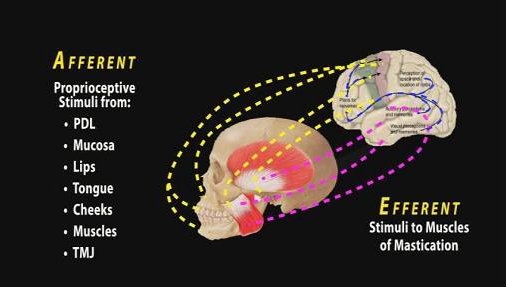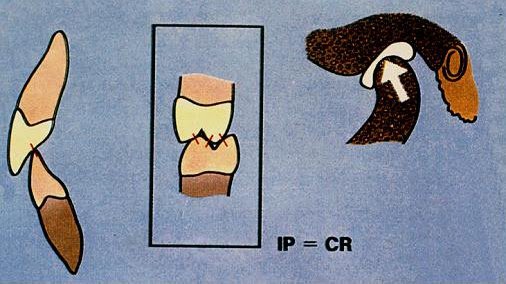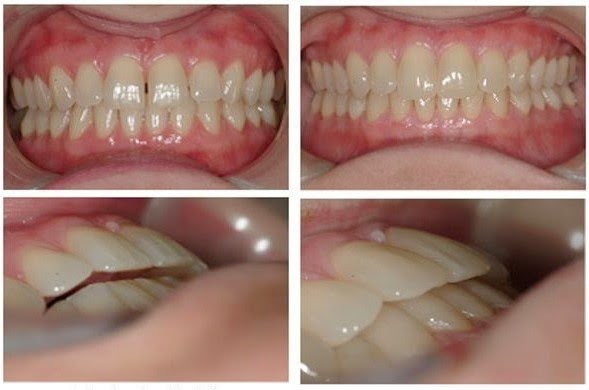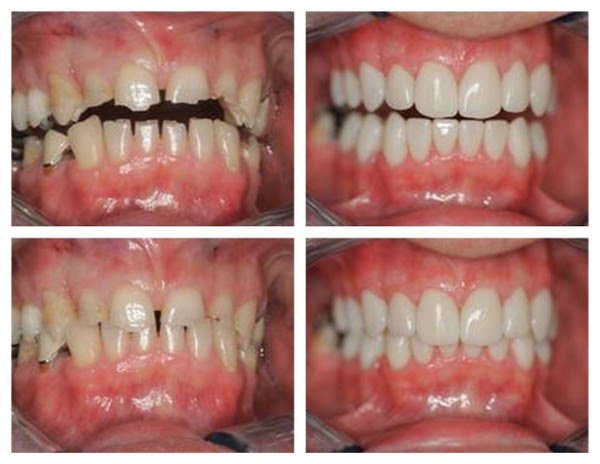Bioesthetics is the study or theory of the beauty of living things in their natural forms and functions.
The goal of treatment is to have a beautiful, predictable, non-wearing dentition. (left photo)
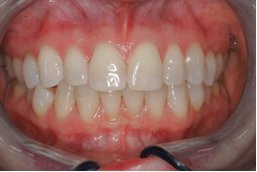
Natural, unworn dentition of a 52-year-old female
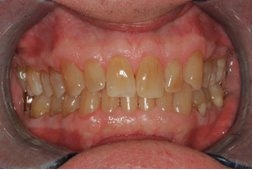
Natural unworn dentition of a 83 year old male.
The principles of Bioesthetics are based on the research and teachings of Dr. Bob Lee. Prior to becoming a dentist, Dr. Lee was a biologist, which gave him a unique view of dentistry. According to Dr. Lee, for any muscle activity to occur (as in Mandibular movement) sensory input is required, ie: sensory in – motor out (Fig. 2).
Fig. 2
The models are modified by removing tooth structure in the posterior teeth (negative coronoplasty), making sure not to flatten the natural dental anatomy. Then tooth structure is added to the anterior teeth with wax (positive coronoplasty) to achieve anterior coupling while in centric relation (Fig. 7).

Fig. 7 Negative and positive coronoplasty to achieve tooth contact in centric relation.
Fig. 8 case completed by Joe Wilson, DDS Belen, NM and Esthetic Dental Arts Lab Albuquerque, NM
In cases with advanced wear, a centric relation record is taken and a new vertical is established. The case is then waxed to this new vertical and transferred to the mouth for a comprehensive reconstruction using porcelain (Fig. 9).
Pre-treatment Fig. 9 Post-treatment
Fig. 9 case completed by Lyndon L. Liebelt, DDS, Albuquerque, NM and Esthetic Dental Arts Lab, Albuquerque, NM
For stability, we also need to take into consideration adequate airway and medications that affect the CNS.

